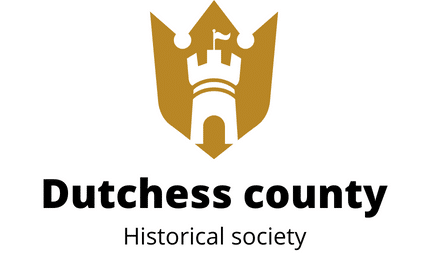What Breakthroughs in Speech-to-Text Technology Are Benefiting the Hard of Hearing?

Progress in technology is steadily bridging the gap in communication for individuals with hear loss. It is a new dawn for the deaf and hard of hearing community as innovative technologies are developed to foster communication and interaction. Among these innovations, speech-to-text technology plays a vital role in enabling these individuals to participate in everyday communication. Let’s dive into the significant breakthroughs in speech-to-text technology and how they are benefiting the hard of hearing.
Language Recognition and Conversion in Real-Time
In the realm of language recognition and conversion, researchers and developers have been working tirelessly to create sophisticated systems that can convert spoken language into written text in real-time. These technologies, also referred to as Automatic Speech Recognition (ASR) systems, have been developed by organizations like Google, and are incorporated into everyday apps we use, providing live captions and transcriptions.
Also to see : How do I use Linux patch management ?
Google’s Live Transcribe, for example, listens to speech and transcribes it into readable text on-the-go. It not only provides real-time transcription, but also supports over 70 languages – a feature that truly enhances cross-cultural communication for the deaf and hard of hearing individuals.
ASR systems are becoming more accurate and faster over time, thanks to improvements in machine learning. They are now able to understand context, manage homophones, and even tolerate a certain degree of noise, making them more reliable in real-world conditions.
In parallel : 12 vidéos inspirantes sur la marque employeur que vous devez voir
Sign Language Recognition Through Technology
While the speech-to-text technology has been a great leap forward, the hearing-impaired community also relies heavily on sign language for communication. Technological breakthroughs in sign language recognition are helping to bridge this gap.
Complex algorithms and Artificial Intelligence platforms are being developed to recognize and translate sign language into text or spoken language. These systems use sophisticated cameras and sensors to capture the intricate hand movements, facial expressions and body language that comprise sign language.
Google’s Project Euphonia, for instance, is an initiative aimed at improving speech recognition for people with impaired speech. The project also focuses on improving sign language recognition using automated tools. This provides a powerful platform for seamless communication between sign language users and those who do not understand sign language.
Encouraging Communication via Text-to-Speech Technology
Text-to-speech technology is the flip side of the communication coin – enabling individuals with hearing loss to communicate their thoughts effectively. It converts written text into spoken words, allowing individuals who are comfortable with written language to communicate with those who prefer spoken language.
Apps like Google’s Text-to-Speech convert digital text into spoken words, making communication accessible and straightforward for individuals with hearing loss. This technology can read aloud anything from books to webpages, providing access to a wide range of information sources that were previously challenging to access.
Improved Access to Academic Resources
Academic resources such as CrossRef and PubMed are increasingly incorporating speech-to-text technology to make their content more accessible to individuals with hearing loss. These scholarly platforms are making vast strides in ensuring inclusivity by transcribing academic discussions, lectures, and podcasts into text.
Through this, they are not only making academic content accessible to the hard of hearing but also providing language translation options. This ensures that language is not a barrier to accessing information, thereby promoting a more inclusive academic environment.
The Impact of Speech-to-Text Technology on Everyday Life
Incorporating speech-to-text technology into daily life goes beyond facilitating communication. It also plays a significant role in education, employment, and entertainment for individuals with hearing loss.
For example, real-time transcription services are now widely used in classrooms and business meetings, where they provide real-time captions of what is being said. This allows individuals with hearing loss to follow along in real time, improving their understanding and participation.
Moreover, in the entertainment industry, TV shows and movies are now often available with subtitles, thanks to speech-to-text technology. This has made entertainment more inclusive, allowing individuals with hearing loss to enjoy the same content as those with normal hearing.
In summary, the impact of speech-to-text technology on the deaf and hard of hearing community is profound. This technology is continually evolving, breaking down communication barriers and fostering inclusivity in all aspects of life.
Integration with Hearing Aids
One of the most exciting advancements in speech-to-text technology is its integration with hearing aids. Hearing aids have traditionally been devices that amplify sound to assist individuals with hearing loss. However, with the incorporation of technologies such as Bluetooth and wireless connectivity, hearing aids have become more than just sound amplifiers. They can now connect to smartphones and other devices, providing a direct link to speech-to-text applications.
Notably, companies like Google have also developed hearing aids that offer real-time transcription capabilities. When paired with a smartphone, these hearing aids can transcribe conversations and other sounds in a user’s environment, displaying the text on the user’s phone screen. This kind of real-time transcription can be extremely useful in noisy environments, where hearing aids alone might not be enough.
Other hearing aid manufacturers are also integrating artificial intelligence technology into their devices. This leads to hearing aids that can understand and respond to voice commands or even predict the user’s needs based on their environment. These advancements are helping to create a more seamless and accessible experience for people with hearing loss, making communication easier and more natural.
Conclusion: The Future of Speech-to-Text Technology for the Deaf and Hard of Hearing
The breakthroughs in speech-to-text technology are transforming the lives of the deaf and hard of hearing community. By enhancing communication, promoting inclusivity in education, and providing access to a wider range of information, these technologies have been instrumental in breaking down barriers for individuals with hearing loss.
Integration with hearing aids, incorporation into academic platforms like PubMed and CrossRef Google Scholar, and the development of artificial intelligence-based applications are just a few examples of how this technology is being utilized. The continuous evolution of these technologies, driven by companies like Google, promises to bring more innovative solutions to the table.
As we look to the future, it’s clear that the potential for speech-to-text technology is limitless. Its use in real-time language recognition and conversion, sign language recognition, and as an integrated feature in hearing aids, paints a picture of a future where communication barriers for the hard of hearing cease to exist.
In conclusion, the world is witnessing a revolution in communication technology—a revolution that is gradually but steadily making the world a more inclusive place for deaf people and those with hearing loss. The transformative power of speech-to-text technology proves that the future is indeed bright and full of possibilities for the hard of hearing community.
